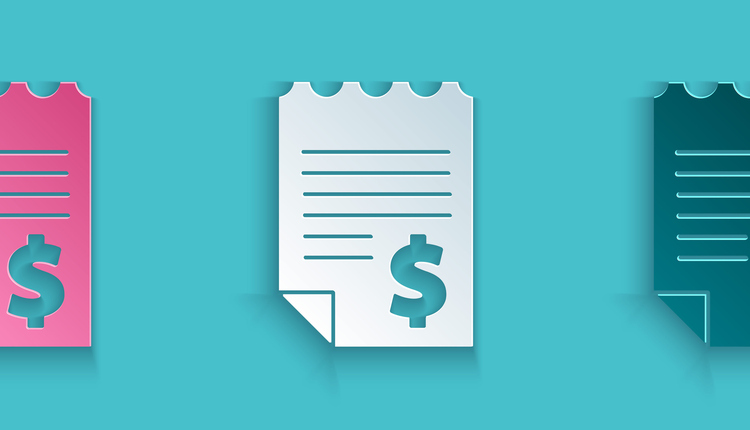Businesses and consumers have all been impacted by COVID-19, and for many of us, the focus has shifted from business as usual to getting through this crisis. With the stay-at-home orders prevailing, many consumers have had no choice but to purchase most items online while curtailing spend on certain non-essential other items, including those traditionally purchased as we get into the summer months. As a result, some businesses have seen a slump in demand while others have seen significant increases in shipments. Unfortunately, still too many businesses, regardless of their e-commerce channel activity, have been negatively impacted by COVID-19. The result has been a drop in their shipping volume with the traditional shipping carriers, the two largest being UPS and FedEx. However, it’s important to note that as an industry, both FedEx and UPS have seen an increase in demand for their services.
As businesses see their shipping volumes decrease, they traditionally would have also started to see an increase in overall shipping costs since their volume/spend is directly tied to their discounts. UPS uses portfolio tiers (a rolling 52-week average) to determine discount levels, while FedEx uses earned discounts (a yearly volume calculation based on the most current week). Both methods use gross spend to determine the discount levels on shipping costs (freight and accessorials). And the last thing a business needs now is more expenses. So, are the carriers doing their part to help their clients during these tough times? For most shippers, the answer is a partial yes. While UPS does seem to have been better prepared and clearer on their process, both UPS and FedEx have implemented plans where discounts are frozen, should a client fall below their current portfolio tier or earned discount.
While at UPS, discounts are proactively frozen as of the March 7th rolling average should a client drop in tiers, at FedEx, although the process is not as clear as UPS, clients may need to manually monitor their own volume trends, calling upon FedEx to hold discounts in the form of a grace discount, if one is close to falling from an earned discount tier. The time period of the freeze with UPS is still an unknown while FedEx has put the process in place until October, which could certainly change based on the fluid situation with COVID-19. In both cases, the implementation of these freezes does benefit the shipper, thus carriers do deserve some credit for putting these plans in place.
As we look at other adverse effects COVID-19 has had on your shipping, note UPS and FedEx recently introduced peak surcharge fees. While the impact is limited to specific volumes and profiles and should not have a significant impact on most shippers, for the high volume and oversize shippers, as well as those who import internationally (weighted higher for Hong Kong and China), they could see these fees having a material impact on their expenses. Let us take a close look at these fees.
| UPS PEAK SURCHARGES | |||||||||||||||||||||
| EFFECTIVE MAY 31, 2020 | |||||||||||||||||||||
| Peak Surcharges are a varying surcharge that carriers apply during times of high demand. UPS has sent notification for the following packages to be subject to one or more peak surcharges as follows. Effective May 31, 2020
· Shipments from China Mainland to the US · Shipments from Hong Kong SAR to the US · International shipments from all origins (except China Mainland and Hong Kong SAR) · UPS Ground Residential and UPS SurePost Packages · Large Packages | |||||||||||||||||||||
| shipments from China Mainland to the US | |||||||||||||||||||||
|
Shipments originating from China Mainland to the US since April 12, 2020 will incur the following until further notice. The peak surcharge for shipments to the US will be applied as a rate per pound based upon the billable weight of the shipment.
| |||||||||||||||||||||
| shipments from Hong Kong SAR to the US | |||||||||||||||||||||
|
Shipments originating from Hong Kong SAR to the US since April 12, 2020 will incur the following until further notice. The peak surcharge for shipments to the US will be applied as a rate per pound based upon the billable weight of the shipment.
| |||||||||||||||||||||
| international shipments from all origins to all destinations (except China Mainland and Hong Kong SAR) | |||||||||||||||||||||
|
International shipments from all origins (except China Mainland and Hong Kong SAR) to all destinations since April 12, 2020 will incur the following until further notice. The peak surcharge will be applied as a rate per pound based upon the billable weight of the shipment. Peak surcharges applicable to shipments originating from China Mainland or Hong Kong SAR are exempt from this AND specifically noted separately above.
| |||||||||||||||||||||
| UPS Ground Residential and UPS SurePost Packages | |||||||||||||||||||||
|
UPS Ground Residential (as defined in the UPS Tariff/Terms and Conditions of Service) and UPS SurePost packages, for all US origins and destinations, for qualifying customers whose combined volume of Ground Residential and SurePost packages during the prior week exceeded the customer’s average weekly volume for February by more than 25,000 packages (“Initial Threshold”) will incur the following:
| |||||||||||||||||||||
| Large Packages | |||||||||||||||||||||
|
A peak surcharge will apply to qualifying customers who shipped more than 500 Large Packages during the prior week, for all US origins and destinations (“Initial Threshold”). Large Packages are defined as packages with length (longest side of the package) plus girth [(2 x width) + (2 x height)] combined exceeding 130 inches, or with length exceeding 96 inches. Once the initial threshold has been met in any week, the peak surcharge will apply to all Large Package shipments at any time regardless of volume in the amounts.
|
| FedEx PEAK SURCHARGES - EFFECTIVE June 8, 2020 | ||||
| Temporary Surcharge | ||||
|
Temporary Surcharge*
*There is no threshold which means packages will be immediately impacted if you use this service.
| ||||
| Peak — Oversize Charge | ||||
|
Peak — Oversize Charge*
Oversize is any package that exceeds 96 inches in length or 130 inches in length and girth. The length and girth of a package is length plus (2 times the height) plus (2 times the width). If the dimension includes a fraction, a fraction of 1/2 or greater will be rounded up to the next whole number; less than 1/2 will be rounded down to the next whole number.
*There is no threshold which means packages will be immediately impacted if you use this service.
| ||||
| Peak — Residential Delivery Charge | ||||
|
Peak — Residential Delivery Charge
Applies to customers at the enterprise level who (1) within a given week ship 40,000 FedEx Express residential and FedEx Ground residential packages combined (excluding FedEx SmartPost and FedEx One Rate); and (2) whose volume in that same week exceeds 120% of their average weekly volume in February 2020. The scope of a customer's volume shall be determined by FedEx in its sole discretion. This surcharge will be billed separately. Your FedEx sales representative will reach out to you regarding how it may impact you. |
For those who use UPS for international imports, you will surely see an increase in expenses from a surcharge on a per pound basis, varying within service type. Shipments from China and Hong Kong will have a higher cost per pound. On the domestic side, UPS has implemented thresholds on Ground Residential and Oversize shipments. A shipper must hit a weekly volume of 25,000 packages (Ground Residential and SurePost) and 500 Large packages to start acquiring those fees.
The story is a little different on the FedEx side, which has no threshold if you ship SmartPost or oversized packages, which is rather surprising. Shippers using FedEx will instantly start to incur the fees on these shipments. So, let’s assume you ship 5,000 SmartPost and 20 Oversize packages in the month, you will now incur an additional $2000.00 and $600.00 respectively in your monthly shipping expenses, if neither service is discounted.
So, are these peak surcharge fees warranted? It’s always hard to justify an additional fee by the carriers but given the added stress and capacity requirements that have been put on their infrastructure in recent months, the fees may cover the resources that are needed to cope with the demand. However, one could argue that FedEx is taking advantage of the situation by not implementing a threshold on certain FedEx shipments.
For shippers who do find themselves in the situation of now having to deal with substantial increases in shipping costs due to the peak surcharge fees, there are some options. From an internal standpoint, you could look to make some changes on how and by which service you ship your parcels. In addition, it never hurts to request a discount or waiver on these fees, even though it might come down to your volume, your relationship, and your history with the carrier. A final point to remember during these discussions is that there is currently no end date for these new charges; yet they were introduced as “temporary” fees.
While the reality of COVID-19 has impacted everyone, we are starting to see some return to normalcy, but shippers and carriers will continue to face daily challenges. It appears that the carriers are taking steps to accommodate shippers during these times and will continue to do so, but it will typically require proactive conversations with them addressing your concerns and issues.
Gavin Creado is a National Account Manager for LJM Group, working closely with clients to manage cost optimization initiatives. LJM Group has been helping shippers save time and improve profitability with expert FedEx & UPS auditing, as well as shipping consulting services focused on cost management since 1998. Please visit our website at www.myLJM.com. To speak with Gavin, please call 631.844.9500 or email gavinc@myljm.com.















